#mixed with negative stereotypes of indigenous & generally non-white demographics
Text
My weird philosophical hot take is that cannibalism has no inherent moral value, and that it is context that gives the act of eating human flesh any moral weight
You killed someone so you could eat them? Killing someone is bad.
You desecrated a grave or otherwise ate someone's corpse without consent? Disrespecting someone's burial/funeral wishes is bad.
Someone you were close to died, and wanted their loved ones to have the opportunity to eat their flesh as part of their funeral/burial wishes? Honoring your departed loved one and/or processing grief through funerary ritual is either good or morally neutral.
You were starving to death and had to eat human flesh to survive? Surviving is good.
The act of eating human meat has no moral value. It's always the context.
#cannibalism#i put too much thought into this for someone who likely wouldnt even like how humans taste#supposedly we're kinda similar to pork. and i really dont like pork usually#but idk. ive seen so much fantasy media use “this fantasy race is CANNIBALS! Theyre evil sAvaGeS”#mixed with negative stereotypes of indigenous & generally non-white demographics#and. it always made me feel weird.#because you can have your fictional species of lizard people or whatever eat their dead and not be racist abt it.
1 note
·
View note
Text
Lesson 15, Task 2: What has influenced me?
Culture is the language, beliefs, values, norms, behaviours, and material objects that are passed on to future generations of society; while material culture, specifically consists of items within a culture that you can taste, touch, and feel. In a generation infused by mass and social media and at the height of globalization, it’s not hard to understand why a person would be influenced by cultures from around the world. Especially, in the form of material culture as it seems to be the most accessible and appealing to our sensory overstimulated society. It is well known that through processes like socialization our own personal cultures shape and influence us as people. But how often do we consider the impact other cultures around us have, particularly in a country like Canada that defines itself as a cultural mosaic and which in 1988 passed the Canadian Multicultural Act; the first national multiculturalism law in the world? I will be discussing just that in this essay and looking at how cultural aspects such as entertainment, fashion, food, architecture, and leisure activities outside of my own culture influence me.
Entertainment
Whether it's by watching Senegalese movies, listening to Balkan music, playing Japanese video games, gazing at Incan sculptures, or reading Soviet novels and multicultural Sufi poetry; entertainment makes a large part of the “foreign” cultures I consume thanks to the extent of mass and social media. Given my own diverse ethnic and cultural background, I have always been interested in different cultures. One of the most influential sources of my interest came in the form of Mexican and Hispanophone-South American telenovelas. Given that my parents come from Cuba and Brazil, respectfully, to someone looking from an outsider prospective it may be confusing how i.e. Mexican, Peruvian, or Argentinean cultures are that different from mine. However, Latin America is neither a cultural nor a racial monolith, and despite countries like Cuba and Mexico speaking the same language on a national level, they are as different from each other as Canada and Jamaica. Although, both Mexico and Cuba were colonized by the same European colonizers, the Spaniards; their colonial and post-colonial histories evolved uniquely (Collier, Simon, Thomas Skidmore, Harold Blakemore, 1992, pg. 25). Watching Mexican telenovelas as a child introduced me to these differences, especially on a racial and cultural level. In Cuba the majority of the population descends from Europe, Africa, and to a lesser extend China; thus most Cubans are either white, black, black-white biracials (most often multigenerational), or Asian (McAuslan, 2010, pg. 523). Cuba and Mexico, as the rest of the Americas were first both inhabited by Native Americans before the Spaniards came. However, in Cuba diseases and slavery of the Indigenous population almost entirely wiped them out in the first couple decades of the Spaniards arrival (McAuslan, 2010, pg. 408). Mexico on the other hand had one of the largest Native American populations in the entire Americas, and to this day they and their descendants still make a large part of Mexico’s demographics (Clarke, 2018, pg. 22-24). Cuba and Mexico both share a unique history in that the Spaniards, as the French and Portuguese, were more open to mixing with the non-white populations in their colonies, and both countries have large mixed-race populations. Nevertheless, unlike in Mexico where the mixture was largely between Europeans and Native Americans, in Cuba it was largely between Europeans and Africans who were brought to the island as slaves (Clarke, 2018, 22-24; see also Collier et al., 1992; McAuslan, 2010, pg. 408). Also, because of racist policies that encouraged post-colonial Spanish and other European immigrants to the country, Cuba’s white population was much larger than that of Mexico, where the white population is largely concentrated in the upper-class (McAuslan, 2010, pg. 409-413). Cuba, however, gone through a communist revolution largely over-threw and exiled the upper- and middle-class white population, and so growing up in the country I was used to being around poor white, black, Asian, and mixed people. This was unlike what I saw in Mexican telenovelas, whereas the main cast was largely white, often portraying the upper-class, many of the minor characters and extras would be people of visible Native ancestry (Moreno, 2017, March 13). At first it influenced my curiosity, as I was used to seeing white people speaking Spanish, but I was not used to seeing people with such prominent Indigenous American features speaking the language. However, later on I continued to see a trend: the maids, butlers, and poorest characters in these telenovelas would often be the ones who looked to be entirely Native in ancestry. Watching Venezuelan telenovelas I started to see this pattern too, however unlike Mexico, with black characters playing the poorest and least significant roles, and once again white people and predominately white mixed-race people playing the leads and recurring characters, typically those in the middle and upper class. Contemplating on this led me to have a deeper interest in both sociology and history. It had a massive impact on me, because I began to see the patterns in my own culture’s media. This is especially true in Brazilian tv which follows a similar pattern, and where white Brazilians make up the majority of the cast and most important characters, while black Brazilians play less significant and often negatively stereotyped roles. It pushed me to learn about the colonial history of Latin America and how the Spaniards, Portuguese, and French all created caste systems which placed European/white descendants at the top of the pyramid, mixed people in the middle, and Black & Indigenous people at the bottom. (Collier et al., 1992, pg. 22). It taught me that in much of Latin America, things had changed very little since the colonial era and that socio-economic status was heavily influenced by race (Collier et al., 1992, pg. 23-26). This is the antithesis of what many Latin American countries claim, describing their nations as multiracial and multicultural paradises, absent of the racism found in the United States (Collier et al., 1992, pg. 34). Although these polarizations were always present in Brazilian and even Cuban television shows, the larger amount of white and black people in Cuba and Brazil overall interacting positively daily, and the slightly large presence of non-white people in the media of both of these countries, had always given me the impression that what I was taught about racial harmony was true. It was not until seeing these striking racial/social contrasts in Mexican telenovelas that I began to look into the problems of my own culture and beginning my journey into sociology.






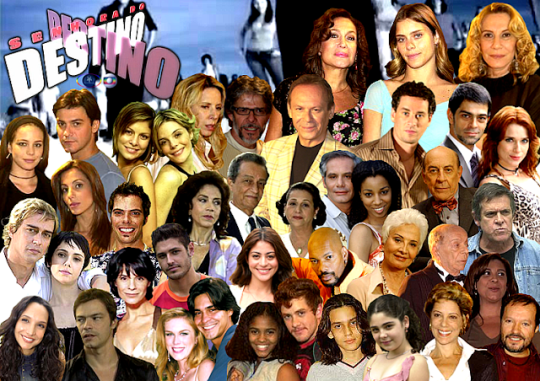
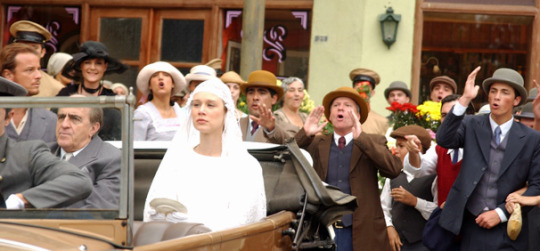
Caption: Typical cast in Telenovelas from different Latin American countries. Most actors, especially main actors are white of European descent. Light-skinned mixed descendants are the second most prominent in certain countries, in some others even they are few. People of predominate African and Indigenous ancestry are usually secondary characters or extras, often playing negative or non-essential roles.


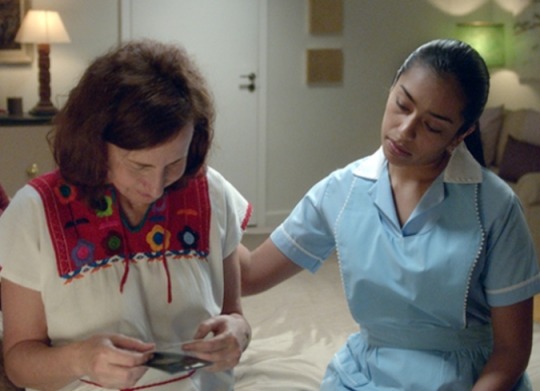
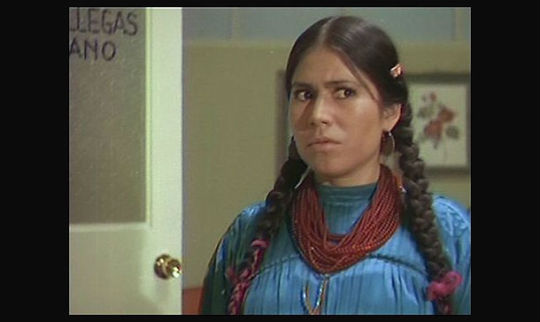




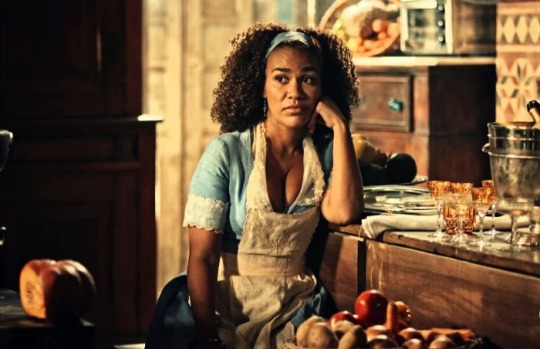
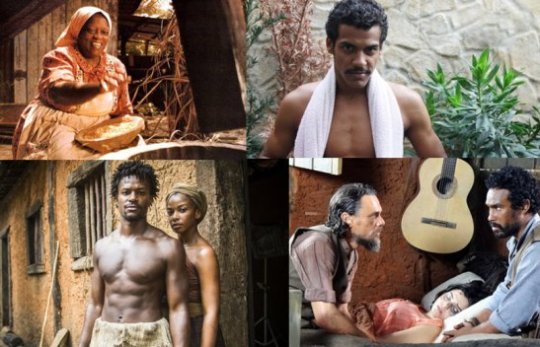




Caption: People of predominate African and Indigenous ancestry typically play maids, criminals, slaves, “non-acculturated” Indian roles (to stress that they’re “unlike us”), and other stereotypical roles. Or the role of the supporting friend to the white character. Black females whenever playing an important role, especially in Brazilian soap operas, are often portrayed as being “saved” from their condition once they find their white prince-charming, a narrative that has its origins in colonial literature.
Sometimes even stories focusing on slavery or colonization have non-Indigenous/Black actors playing them.



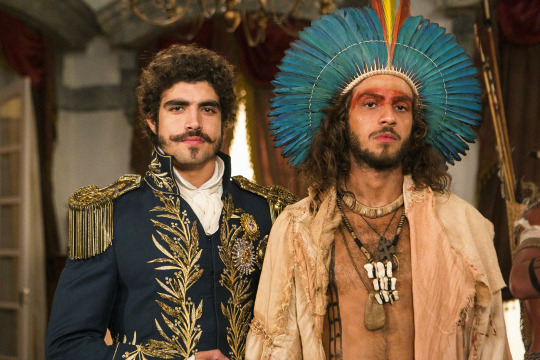

Caption: The first telenovela “White Slave” was about trans-atlantic slavery in Colombia, but the whole show was focused on a rich white girl who was sold into slavery and raised by formerly enslaved Africans who escaped to Maroon settlements. The rest of the examples are of white or light skinned-mixed-race people playing black and Indigenous characters.
Fashion
It’s not a surprise that Canada is cold, especially in the winter time, and because of this Canadians are well prepared for such a climate. The piece of fashion that I have incorporated into my own fashion while living in Canada is that of the toque (Cornell, 2012, Sept. 10). The toque is a national symbol of Canada and most Canadians wear them throughout winter. It is believed that the fashion of wearing a toque in this country started with the Bois-Doi-Couers, fur-trappers, often of Metis descent, who made up the first generation of contact between European and Indigenous people (Wikipedia contributors, 2018, June 6). This is why I think it is a quintessential item in helping me adapt both to the climate and the culture/history of this nation. The toque has had a great impact in my life by keeping me warm from the harshness of Canadian winter.


Caption: A Catalan French man wears a type of Phrygian styled hate popular in Southern France and Spain, the influence for the Canadian toque.
Food
Food? What can I tell you about my love for food and the various cuisines of the world. The GTA is one of the most multicultural regions of the world and it has one of the most diverse selections of "ethnic" restaurants, spanning from Uyghur all the way to Chifa (Chinese-Peruvian) dining establishments. Wherever I go, I can't stop myself from being influenced by ingredients and dishes from around the world, for example using loads of Angolan piri piri hot sauce in most of my meals. Toronto like my mother's native Sao Paulo share two of the largest Italian diasporas in the world, and because of this I have greatly been influenced by pasta (Veccia, 1984, pg. 4-12). Due to Italian immigration, pasta has become a staple of the cuisine of Sao Paulo, and it has impacted me greatly because it's been one of the main sources of carbohydrates in my daily life (Coughlin, 2013, Sept. 13). Interestingly enough, there are many legends and theories as to how pasta got to Italy, ranging from Marco Polo introducing it in the Middle Ages, towards the more accepted belief of early Nomadic Arabs spreading it into Europe (Avery, 2012, July 26). Which shows how vastly different cultures have been interacting with each other for hundreds to thousands of years via things like trade routes.
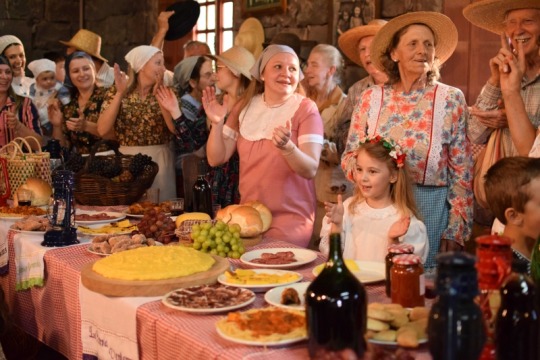
Caption: Brazilians of Italian descent during a folk festival. WIth them are popular dishes brought to Brazil by immigrants from Italy such as pastas, polenta, and cured meats.
Architecture
Studies show that architecture can have both an emotional and psychological impact on us, and I have personally known this to be true (Weller, 2016, Sept. 15). Growing up in Cuba I live on a block where houses were all attached to each other and the road was narrow. Whenever you would walk out of your house the whole street was socializing with each other; people played dominoes, had street parties, and regularly sat around socializing outside as fellow neighbours. This scenario gave me a sense of community, belonging, and a frequent dose of socialization as a child. Then, for some time, I moved to Miami in the United States to live with cousins. They lived in suburbs with wide streets, long back-yards, and houses that were quite a spatial distance from each other. These suburban designs made me feel very isolated and distanced from everyone living around me outside of my family. There wasn't the same feeling of community I felt in the densely populated neighbourhoods in Cuba, where although it could sometimes feel crowded when all the neighbours were out, it always gave me a sense of social belonging and a sense of knowing my neighbour on an intimate level. Later on, living in Canada and working in the construction industry, had once again given me a chance to encounter something that I saw as North American, due to the reason that such suburbs do not exist in my own country. However, this time around it was not the suburbs themselves, but the exurbs; which as we have learned in this unit are the result of greater urban sprawl, and a headache on our environment according to some environmentalists such as David Suzuki. In the exurbs, such as Milton, I discovered something else that had a negative psychological impact on me; tract housing. Although in Canada they're not as bad as some parts of the U.S. or places like China and the UK, they have left a horrid impression on me, due to the fact that most of them look the same and are designed in the same way. It gives a type of robotic, cold, homogenous, collective feel to them. Paradoxal, considering the very non-collective makeup of society in these types of environments (despite how they're portrayed in the media) (Preswitch, 2017, March 16).


Caption: Tract housing. This is depressing.

Caption: Markham, Ontario.
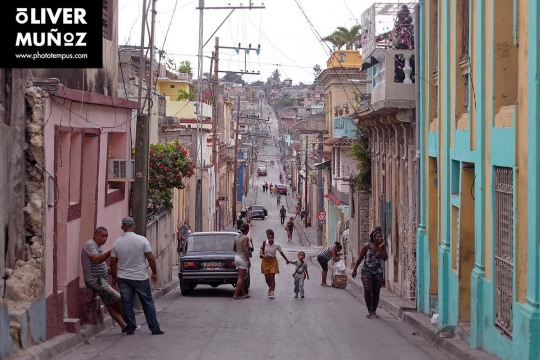
Caption: Most streets both in urban and rural Cuba are close together.


Caption: There are some rural areas with very isolated types of houses, called Bohios, with large plantations or fields for farming. These are usually occupied by descendants of Spaniard/other European peasants who were encouraged to settle in Cuba in rural areas in the 19th century, in order to inhabit areas that were very isolated and were often perfect environments for “Maroon/Palenque” runaway slave) settlements. Most of these farmers and their families have settled in less isolated rural areas where housing is similar to the urban areas or in proper urban areas.
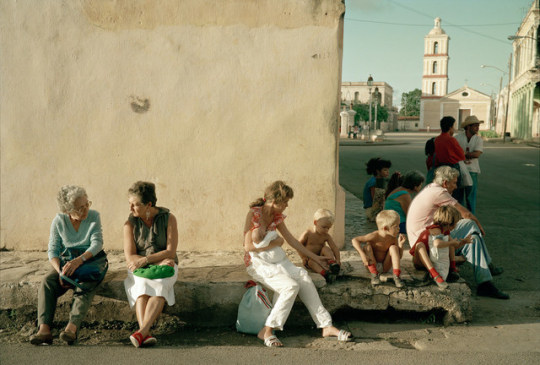

Caption: Most Cubans socialize daily on their neighbourhood street or block. Since until very recently the state owned all property, many people began making businesses from their homes. So often a local business is run on the street or inside the house of a neighbour, thus the person running the business will mostly have clients who are neighbours.


Caption: Cubans hang on their street daily. Often playing card games and dominoes in front of their houses, on the street.

Caption: Community parties and Lukumi (Afro-Cuban deity) and Catholic saint processions occur frequently among neighbours/people on the same block.
Leisure
Leisure activities with origins from around the world are another way you can experience the GTA and Canada as a whole. It's difficult to not to know an urban-dweller that hasn't partook in Japanese Karate, Afro-Brazilian Capoeira, or Hindu Yoga, and I have partaken in various forms of all three activities myself. However, the most influential forms of past-time, would have to be two from my own childhood, both activities have origins in China but have had different impacts on me growing up. Cuba has a large Chinese descended population originating from indentured labourers that were brought to the island at the end of the slave trade (Lopez, 2013, June 10, pg. 50-52). Most Cubans of Chinese ancestry have assimilated into the general population, but many of their cultural traits were infused into the general culture of the nation. Growing up in Cuba, one my best-friends was a Cuban of Chinese ancestry and he and I would often play Mahjong, which is a tile-based game that was developed in China during the Qing dynasty (Lam, 2017, July 28, pg. 11). I've mentioned before Cubans love playing dominoes, and mahjong has many similarities to dominoes. This impacted me because it created a lot of fond memories, and the nostalgia of them hit me every time I play the game in the present. Another example of a Chinese leisure activity that has a lot of popularity in Cuba is that of Tai Chi, which has origins in Taoist philosophy (Wong, 1996, pg. 3). Tai Chi is an activity my grandmother often partakes in, it brings her a lot of joy and opportunity to stay healthy in her elderly age, while being able to socialize with friends and neighbours. It has impacted me because it not only has brough such joy to my grandmother's life, but also helped me bond with her while partaking in it alongside her. In my opinion, it's a great way to get the aging baby-booming population to gather together, work on their bodies, and receive pleasure and the positive psychological benefits which are said to come from partaking in the activity.
youtube
Caption: News segment about Little China in Havana, Cuba.

Caption: Cubans of Chinese descent play mahjong

Caption: Elderly Cubans partaking in Tai Chi
Final Thoughts
In a globalized world and a multicultural region of earth that the Americas are, it's close to impossible not to partake or enjoy of a culture that is different from your own. Often, we don't realize how the socialization process might impact us. How the people and cultures we’re around could shape the way we think and behave, even if its contradictory to our own personal culture. As I have presented above, anyone living in the Americas from Canada, to Cuba, and Brazil could be influenced and impacted by the entertainment, culture, fashion, foods, architecture, and leisure activities of cultures other than their own, in the way I have been. These cultural influences on my life have made me the person that I am today, and have made me appreciate being the global citizen of the world that I am. As the world is changing and people around it open themselves up more to humanity; I hope that people are able to share their cultures more prominently. My only wish is that we go by it in another way. Because like many critics we have read about in this unit, I do unfortunately believe that when culture is globalized it can easily be warped into some type of manufactured, whitewashed, Americanized version of what it originally was. It would be unfortunate if this pattern continued. What is the solution to keep that from happening? I don't think we really have one yet..
References
Avey, Tori. (2012, July 26). Uncover The History of Pasta. Retrieved 7:26 pm., August 28, 2018. From: www.pbs.org/food/
Clarke, Colin. (2018). Mexico and the Caribbean Under Castro's Eyes: A Journal of Decolonization, State Formation and Democratization (22-24). New York City: Springer International Publishing.
Collier, Simon, Thomas Skidmore, Harold Blakemore, eds. (1992). The Cambridge Encyclopedia of Latin America and the Caribbean, 2nd ed (pg. 22-34). New York: Cambridge Univ Press.
Cornell, Kari. (2012, September 10). Knitting Hats & Mittens from Around the World: 34 Heirloom Patterns in a Variety of Styles and Techniques (pg. 5). Minneapolis, USA: Voyageur Press.
Coughlin, Jovina. (2013, September 13). South America’s Little Italies. Retrieved 7:19 pm., August 28, 2018. From: https://jovinacooksitalian.com
Lam, Desmond. (2014). Chopsticks and Gambling (pg. 11). Abingdon, UK: Routledge.
Lopez, Kathleen M. (2013, June 10). Chinese Cubans: A Transnational History (Envisioning Cuba) (pg. 50-52). The University of North Carolina Press.
McAuslan, Fiona. (2010). The Rough Guide to Cuba (pg. pg. 409-413 and 523). London, England: Rough Guides.
Moreno, Carolina. (2017, March 13). This Latina Is Calling Out Telenovelas For Being 'Overtly White'. Retrieved 05:19 pm., August 28, 2018. From: https://www.huffingtonpost.ca/entry/this-latina-is-calling-out-telenovelas
Preswitch, Emma. (2017, March 16). Canada's Seniors Live in Suburbs, And That's A Problem, Says New Report. Retrieved 8:01 pm., August 28, 2018. From: https://www.huffingtonpost.ca/2017/03/16/seniors-canada
Veccia, Theresa R. (1984). Families on the Move: Italian Emigration to Saõ Paulo, 1880-1914 (pg. 4-12). University of Wisconsin--Madison.
Weller, Chris. (2016, Sept. 15). There may be an evolutionary reason suburbia feels so miserable. Retrieved 7:48 pm., August 28, 2018. From: www.businessinsider.com/why-suburbs-are-bad-2016-9
Wikipedia contributors. (2018, June 6). Toque. In Wikipedia, The Free Encyclopedia. Retrieved 01:19, August 29, 2018. From: https://en.wikipedia.org/w/index.php?title=Toque&oldid=844733269
0 notes